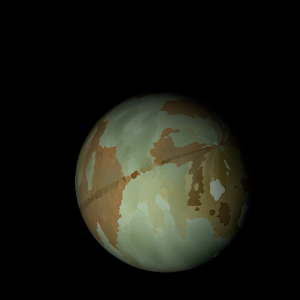|
|
Space Astro
|
Info for exoplanet "Gyaku-pihone"
| Scientific (actual) data |
|---|
| Name | Kepler-163 c |
| Planet status | Confirmed |
| Radius | 0.202 |
| Orbital period | 21.3473 |
| Semi major axis | 0.152 |
| Discovered | 2014 |
| Updated | 2021-02-05 |
| Tconj | 2455000 |
| Impact parameter | 0.15 |
| Publication | Announced on a website |
| Detection type | Primary Transit |
| Alternate names | 2MASS J19400067+4659143 c, K00471.01, KIC 10019643 c, KOI-471 c, KOI-471.01, WISE J194000.66+465914.4 c |
| Star name | Kepler-163 |
| Right ascension | 295° |
| Declination | 46.99° |
| Mag v | 14.46 |
| Mag j | 13.194 |
| Mag h | 12.85 |
| Mag k | 12.784 |
| Star distance | 689.814 |
| Star metallicity | 0.141 |
| Star mass | 0.94 |
| Star radius | 0.97 |
| Star sp type | G6V |
| Star age | 4.27 |
| Star temperature | 5410.9 |
| Star alternate names | KIC 10019643, WISE J194000.66+465914.4, KOI-471, 2MASS J19400067+4659143 |
| Wikipedia article | Kepler-163 c |
Back
| |
| Fictional info (?) |
|---|
| Suggested name | Gyaku-pihone |
| Planet type | Planet |
| It may have had oxygen oceans in the past, but these would have vaporized as the temperature rose due to a runaway greenhouse effect.
Because of its fast rotation, the planet's shape is that of an oblate spheroid (it has a slight but noticeable bulge around the equator). |
| Atmosphere | Molecular hydrogen | 36% |
| Xenon | 22% |
| Oxygen | 19% |
| Nitrogen | 16% |
| Nitric oxide | 4.9% |
| Hydrogen | 1.8% |
| Ethane | 0.69% |
| 2H2O | 0.16% |
| Formaldehyde | 0.0037% |
| Neon | 0.0022% |
| Atmospheric pressure | 60 bar |
 |
| Moon | Ruro'ko | Small slightly egg-shaped oceanic comet |
| Byanyushi Jo | Very small irregular ice planetoid |
| Dotsuga-byu | Very small almost round rocky asteroid |
| Google search for Gyaku-pihone |
|
Website by Joachim Michaelis
|
|
|
|